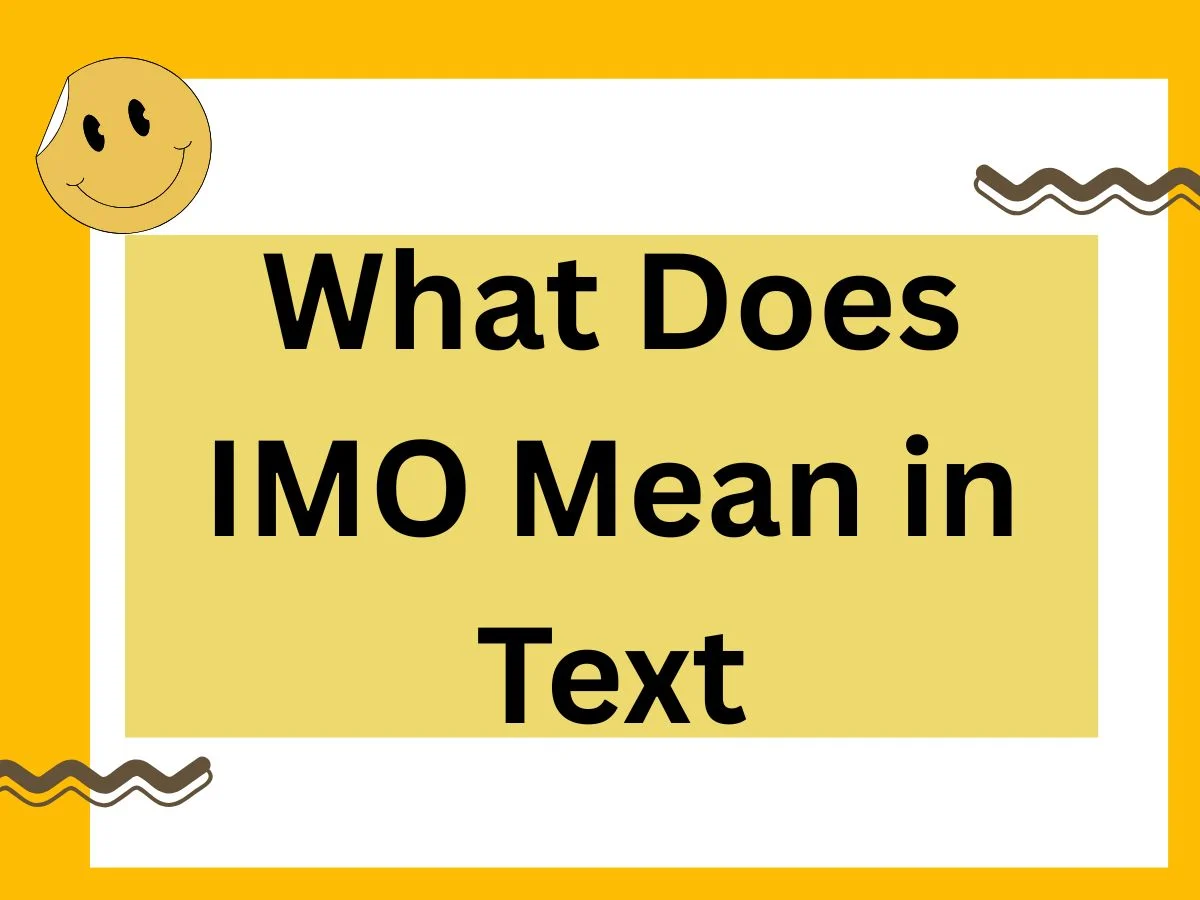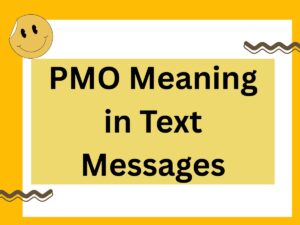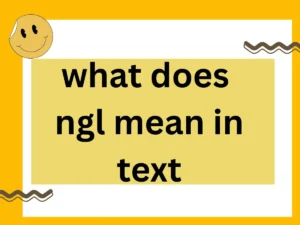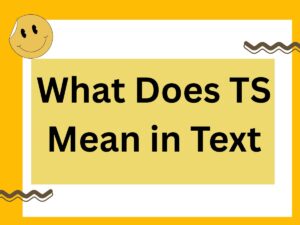In the world of instant messaging, social media captions, and online forums, abbreviations are the lifeblood of fast communication. They compress complex ideas into a few characters, saving time while still getting the point across.
🔥 Rizz Line Generator 🔥
One of the most widely used — yet sometimes misunderstood — abbreviations in text is “IMO.” Whether you’ve seen it pop up in a heated debate on X (formerly Twitter), a casual TikTok comment, or a professional Slack conversation, understanding what it means and how to use it correctly can sharpen both your written clarity and your conversational style.
This guide isn’t just a dictionary definition. It’s a deep dive into the 2025 context of “IMO,” offering insight into tone, etiquette, and polished alternatives you can use when you need to fine-tune your message.
The Core Meaning of “IMO” in Text
IMO stands for “In My Opinion.”
It’s used to signal that what you’re saying is a personal viewpoint rather than an objective fact.
This simple abbreviation plays a subtle but important role in digital communication: it frames your message as subjective and often softens statements that might otherwise come across as overly blunt.
Why “IMO” Matters in 2025
In today’s online environment, tone is everything. People are quick to react to perceived arrogance or factual overreach. Adding “IMO” shows that you’re aware of other perspectives and are presenting your statement as just one possible view.
For example:
- Without “IMO”: “This is the best movie ever.” → Sounds absolute, leaves no room for disagreement.
- With “IMO”: “IMO, this is the best movie ever.” → Acknowledges it’s personal taste, reducing the chance of pushback.
Variations You’ll See
While “IMO” is the standard form, you might also encounter:
- IMHO: “In My Humble Opinion” — a slightly self-deprecating version, sometimes sarcastic.
- IMPO: “In My Personal Opinion” — reinforces that it’s a subjective stance.
- IMNSHO: “In My Not-So-Humble Opinion” — a humorous or confident twist.
These variations all share the same core meaning but shift the tone.
How “IMO” Is Used in 2025
Through 2025, “IMO” has remained one of the most versatile abbreviations online. Its uses span from lighthearted personal takes to serious professional exchanges.
Common Contexts:
- Casual online debates
“IMO, pineapple on pizza is elite.” - Social media commentary
“IMO, this is the most underrated album of the decade.” - Professional discussions (Slack, Teams, Email)
“IMO, the campaign would perform better with a shorter headline.” - Softening criticism
“IMO, the pacing could be tighter in the second act.” - Framing subjective predictions
“IMO, the market will stabilize by Q3.”
Tone and Nuance
The abbreviation may be short, but its impact on tone is significant. Used well, “IMO” can:
- Make a statement less confrontational.
- Invite open dialogue rather than shut it down.
- Show respect for differing perspectives.
However, tone shifts with context:
- In friendly chats, “IMO” can feel casual and approachable.
- In professional settings, it can signal thoughtfulness — but overusing it may make you sound hesitant or unsure.
When Not to Use “IMO”
- When you’re presenting verifiable facts
Wrong: “IMO, water boils at 100°C.”
Facts don’t need an opinion disclaimer. - In urgent or directive communication
In emergencies or instructions, clarity beats hedging.
Instead of: “IMO, you should evacuate now”
Use: “Evacuate immediately.” - When it weakens your authority unnecessarily
In leadership roles, overuse can make you sound less decisive.
2025 Insights: How “IMO” Is Evolving
In 2025, “IMO” isn’t just filler — it’s strategic. With digital tone sensitivity at an all-time high due to AI-moderated platforms and algorithmic detection of aggressive speech, abbreviations like “IMO” can help your content pass through filters and avoid being flagged for hostility.
New observation:
In professional networking spaces like LinkedIn discussions or AI industry forums, “IMO” is increasingly used not just as tone-softening but as a credibility marker — signaling humility and openness in a world where confident but collaborative voices stand out.
10 Polite, Professional, and Casual Alternatives to “IMO”
If you want to vary your phrasing or adapt to different settings, here are ten excellent options — each with an example and tone guide.
1. “From my perspective”
- Tone: Professional, diplomatic
- Example: “From my perspective, expanding into the European market is a smart move.”
2. “I believe”
- Tone: Confident but respectful
- Example: “I believe this design aligns better with our brand identity.”
3. “In my view”
- Tone: Neutral, adaptable to formal or casual use
- Example: “In my view, remote work boosts productivity.”
4. “Personally, I think”
- Tone: Conversational
- Example: “Personally, I think this series peaked in season two.”
5. “To me”
- Tone: Informal, intimate
- Example: “To me, that song will always be a classic.”
6. “As far as I’m concerned”
- Tone: Direct, personal
- Example: “As far as I’m concerned, honesty matters more than speed.”
7. “If you ask me”
- Tone: Casual, often in spoken English
- Example: “If you ask me, that café has the best coffee in town.”
8. “The way I see it”
- Tone: Friendly, slightly reflective
- Example: “The way I see it, we need a different strategy for Q4.”
9. “I’m of the opinion that”
- Tone: Formal, academic
- Example: “I’m of the opinion that early intervention can significantly improve outcomes.”
10. “Speaking for myself”
- Tone: Inclusive, humble
- Example: “Speaking for myself, I prefer smaller, focused teams.”
How to Choose the Right Alternative
- Match the setting:
- Workplace → “From my perspective” / “I believe”
- Social media → “Personally, I think” / “The way I see it”
- Match the mood:
- Lighthearted → “If you ask me”
- Serious debate → “I’m of the opinion that”
- Think about your role:
Leaders often balance decisiveness with openness; too much hedging can weaken your stance.
Common Missteps With “IMO” and Its Alternatives
- Overqualifying every statement — makes your communication feel weak.
- Using it to mask uncertainty instead of admitting you need more information.
- Dropping it into factual claims — undermines credibility.
Final Thoughts
“IMO” may be just three letters, but in 2025’s fast-moving, tone-sensitive communication landscape, it’s a powerful tool. Used thoughtfully, it can soften debates, invite collaboration, and make your perspective clear without sounding pushy.
By understanding its nuance — and keeping a roster of polished alternatives — you can adapt your tone for any audience, whether you’re texting a friend or presenting at a global conference.





